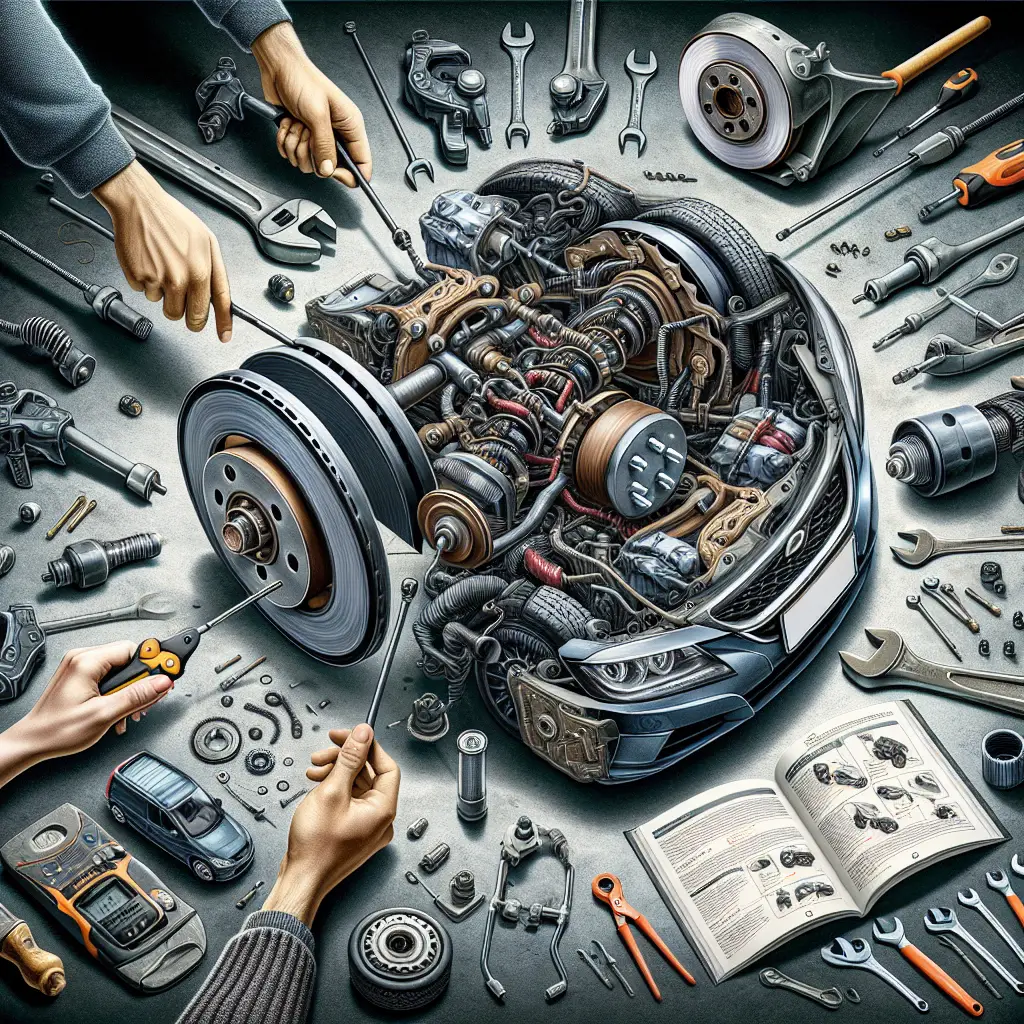How Hard Is It To Change Brakes? A DIY Guide For Car Enthusiasts
Introduction
Brake maintenance is an essential part of vehicle upkeep that ensures your safety on the road. With tutorials and guides readily available, many car enthusiasts consider taking on this task themselves. Whether it’s the sense of accomplishment, the potential cost savings, or simply the love for getting your hands dirty, understanding the complexity of changing brakes is key before you begin. So, how hard is it to change brakes on your own? Let’s dive in.
Is DIY Brake Replacement Right For You?
Before you start disassembling your brake system, let’s assess whether this is something you should attempt. Changing brakes can range from a reasonably straightforward job on some vehicles to a complex task requiring specialized tools and skills on others. Your experience level with automotive repairs, the make and model of your vehicle, and your access to the necessary tools will all be deciding factors.
Tools You’ll Need
The right tools are crucial for a successful brake job. Here’s a basic list to get you started:
- Jack and jack stands
- Lug wrench
- C-clamp or brake caliper tool
- Ratchet and sockets
- Torque wrench
- Brake fluid
- New brake pads and possibly rotors
- Brake cleaner
- Shop rags or towels
- Safety glasses and gloves
Please make sure to consult your vehicle’s service manual for any additional tools specific to your car. AutoZone’s Loan-A-Tool service is a resourceful way to get temporary access to more unusual or vehicle-specific tools you might need.
Steps To Changing Your Brakes
Step 1: Wheel Removal
Safely lift your vehicle using a jack and secure it on jack stands. Loosen the lug nuts and remove the wheel to expose the brake caliper and rotor.
Step 2: Caliper Disassembly
Remove the caliper bolts and carefully slide the caliper off the rotor. It’s important to support the caliper to avoid putting stress on the brake line.
Step 3: Replace Brake Pads and Rotors
Once the caliper is off, the brake pads can be removed. If necessary, resurface or replace the rotor. Resurfacing is a job typically done by a machine shop, but if you need to replace them, here’s a guide by The Family Handyman that can be helpful.
Step 4: Compress The Brake Caliper Piston
Using a C-clamp or a brake caliper tool, compress the piston within the caliper to make room for the new brake pads.
Step 5: Reassembly
Install the new brake pads, reapply the caliper, and bolt it back in place. Make sure to torque the bolts to the specifications listed in your service manual.
Step 6: Bleeding Your Brakes (if necessary)
If you’ve opened the hydraulic system or find the brake pedal feels soft after the pads are replaced, you may need to bleed the brakes to remove air from the lines. Popular Mechanics offers a thorough explanation on how to bleed your brakes properly.
Step 7: Wheel Reinstallation and Testing
Replace the wheel, lower the vehicle, and use your torque wrench to tighten the lug nuts to the vehicle’s specification. Before driving, pump the brake pedal to ensure it feels firm and recheck the brake fluid level.
Tips For Success And Safety
- Always work with a cool vehicle; brake components can become extremely hot.
- Never ignore the importance of torque specifications; over-tightening can lead to warped rotors or brake failure.
- Use quality parts; your safety depends on the reliability of the components you install.
- Dispose brake fluid and old parts responsibly; consult your local waste disposal guidelines.
When To Call A Professional
If you’re feeling overwhelmed at this point, or if during the process you encounter something you didn’t plan for, such as a snapped bolt or a stuck piston, it might be time to call a professional. Changing brakes requires precision and caution. There’s no shame in prioritizing safety and reliability by choosing a trusted mechanic.
Conclusion
Changing brakes can indeed be a challenging task for those new to automotive DIY. It requires patience, attention to detail, and respecting the safety protocols at all times. Armed with the right information and preparation, most car owners with a moderate level of mechanical skill can complete this job successfully.
Remember that your vehicle’s brakes are crucial for ensuring safety; any mistakes can have severe implications. If in doubt, consult with a professional. After all, changing your brakes isn’t just a matter of how hard it is—it’s also a matter of how safe you want to be on the road.
Happy wrenching, and stay safe out there!

